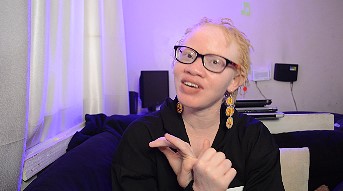Summary
Human skin tones are often categorized as black, white, and brown, but in reality, they are all different shades of brown, ranging from light beige to deep brown. People with oculocutaneous albinism, who lack melanin, are often labeled as "white," but their skin is actually a very pale tone with pink or peach undertones. While their skin can appear almost white, no human truly has a white complexion. Their unique hue is a light, delicate shade that adds to the rich diversity of human skin tones.
Let’s kick things off with a quick question: What’s your color? Are you black? White? Brown? Or maybe a little chocolatey? No, I’m not asking for your coffee order. I’m talking about skin tones, the stuff that gets everyone wrapped up in categories like black, white, and brown. But wait a minute—are these labels even accurate?
Here’s the thing. When you really look at skin tones, it’s clear that no one’s actually black, white, or any of the colors we love to throw around. The lightest skin is more like a light beige, and the darkest is a deep, rich brown. Guess what that means? We’re all rocking different shades of brown, folks! That’s right, from latte to espresso, it’s all just a range of browns.
But What About People with Albinism?

Okay, now that we’ve established that we’re all on the brown spectrum, what do we say about individuals with albinism—specifically those with oculocutaneous albinism (OCA)? These folks have little to no melanin, which means the usual brown pigments are pretty much out the window. So, what’s their color?
Here’s where things get interesting. People often say individuals with albinism are “white,” but let’s be real: no human being is literally white. The closest thing we have to “white” in nature is snow—and last I checked, nobody’s walking around looking like a snowbank! What’s really happening is that, without melanin, their skin appears super pale, often with a pinkish or peachy hue. It can look almost white, but not quite. It’s like trying to describe the color of the moon—not white exactly, but a soft glow with a hint of warmth.
So What’s the Verdict?
If we’re sticking with our trusty color categories, we can’t accurately place people with albinism in the “white” box. They have a unique skin tone that’s lighter than light beige, often with a delicate tint that gives them their distinct appearance. It’s almost like nature decided to mix the tiniest drop of blush into porcelain paint and call it a day.
But here’s the fun twist: just like everyone else, people with albinism are part of the beautifully diverse spectrum of human skin tones. Their unique complexion isn’t “white” in the traditional sense; it’s a special, striking lightness that stands out in the best possible way.
So, the next time you find yourself categorizing skin colors, remember: we’re all just different shades of brown… with a few exceptional hues mixed in!




0 Comments